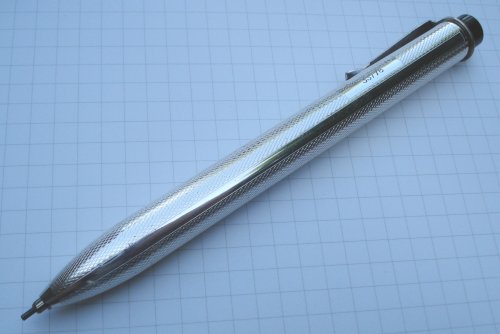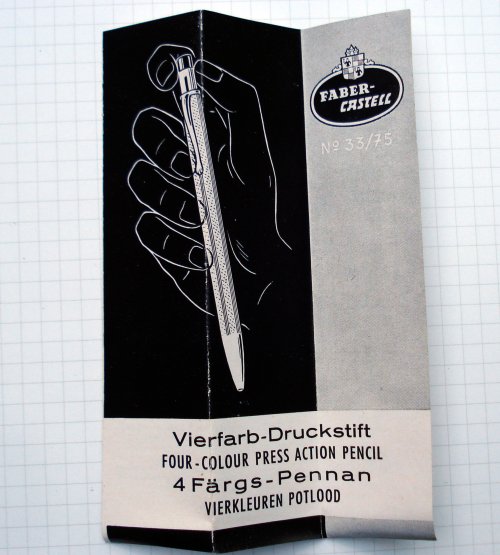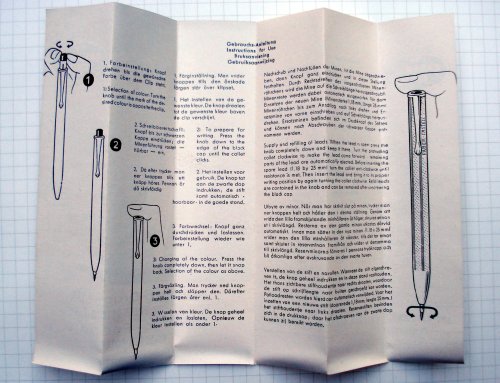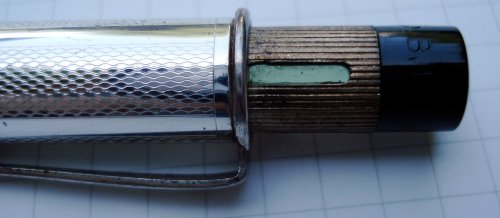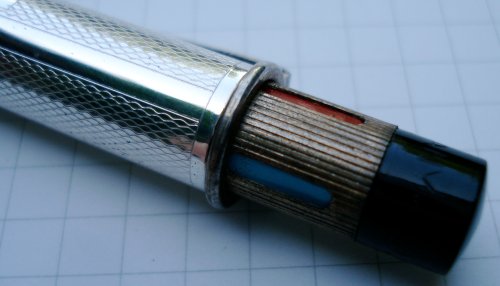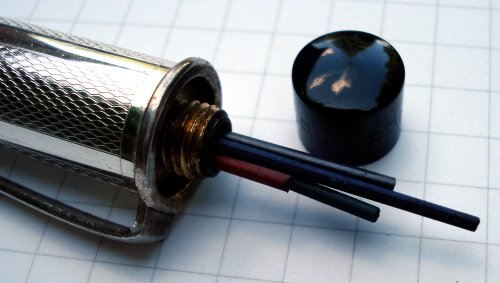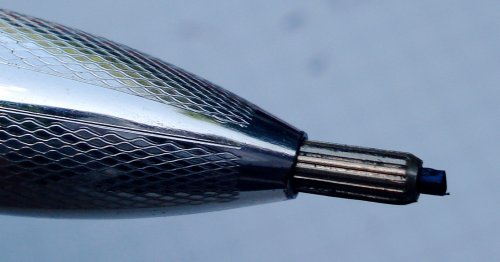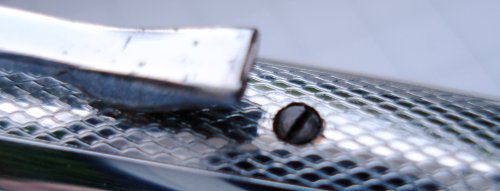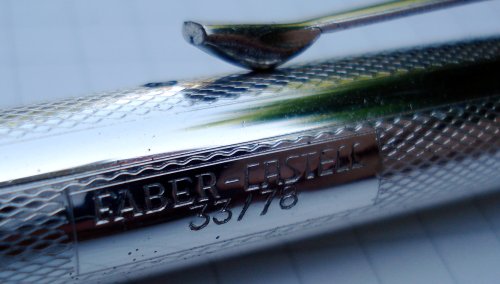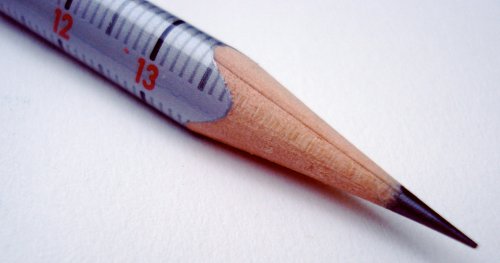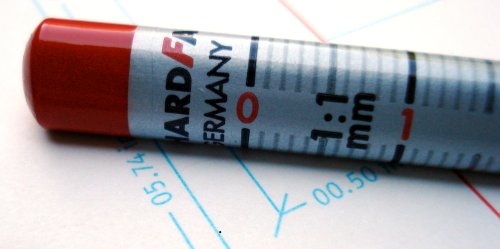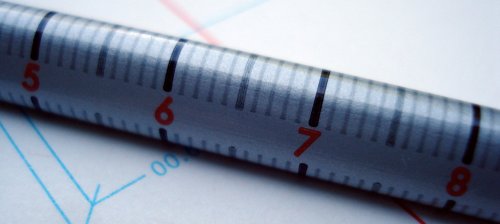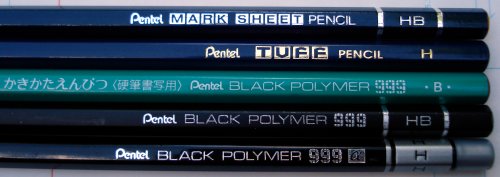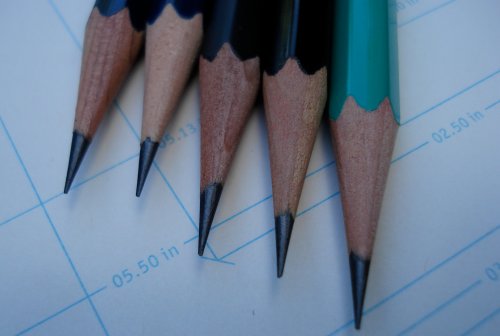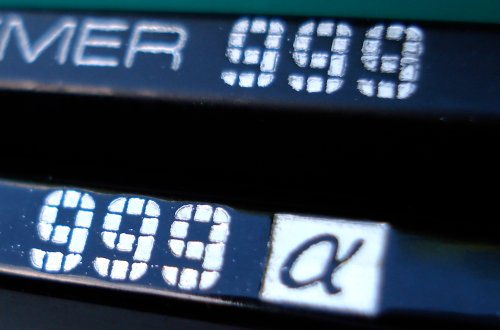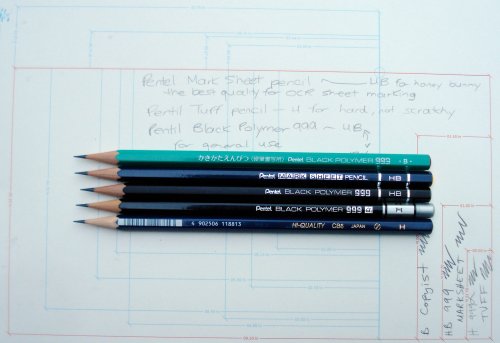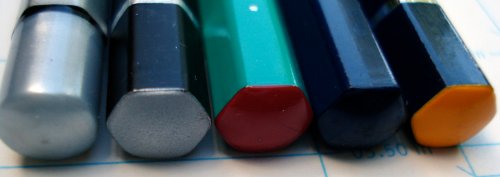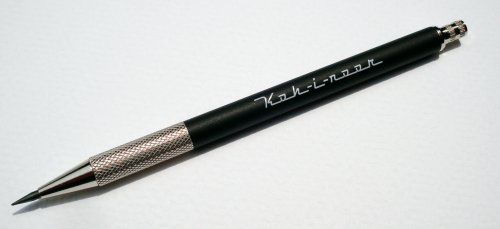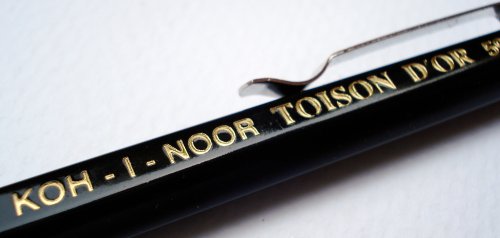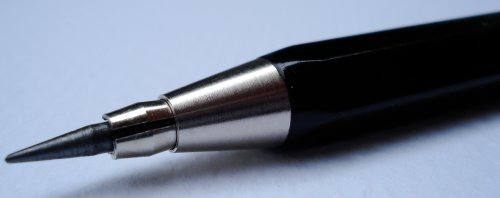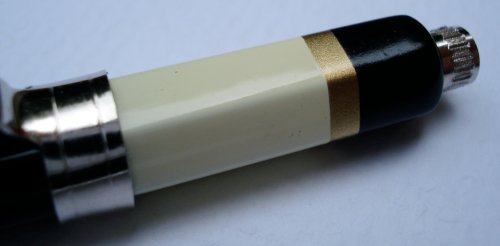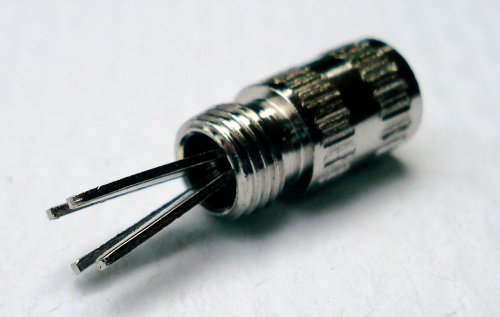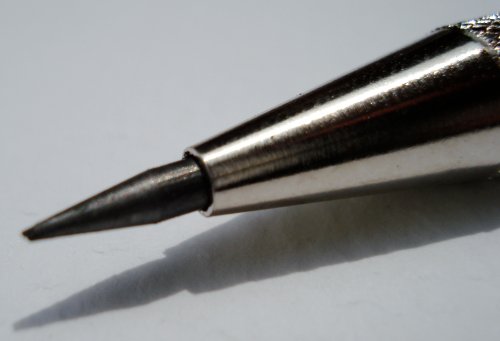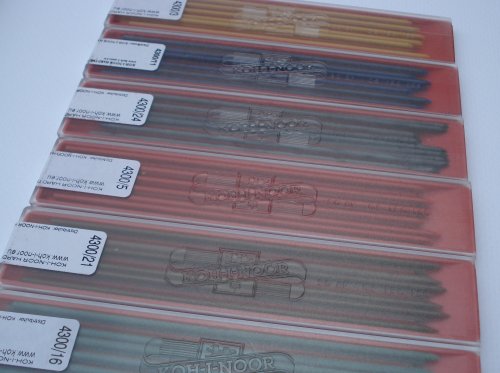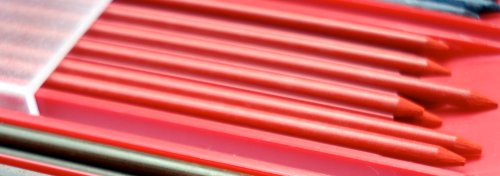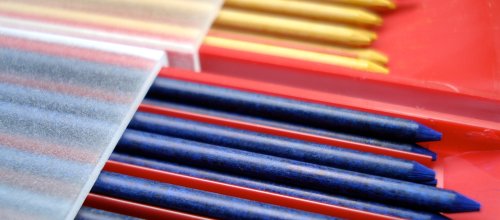
The Caran d’Ache Tricolor is another vintage multipencil, no less complicated than the pencil in the previous post.

Gold-plated, the cap is inscribed “Plaqué D’or”.
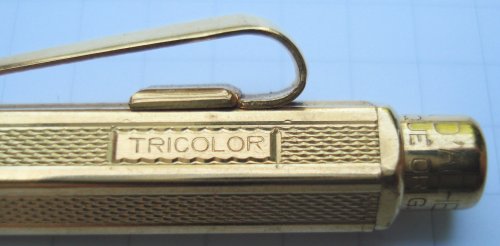
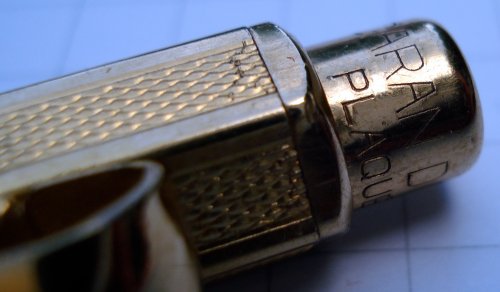
It is a leadholder with three (graphite, red, blue) inserts.
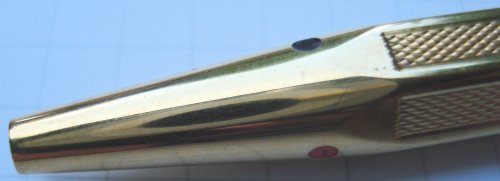
Instructions are always good, but warnings in special red ink can be a bit scary.


(Non-literal translation: If you break a lead, you’re on your own.)
Basically, there are three lead collets (“collet” is the term used in the manufacturer literature) within the pencil. Pushing the cap and holding the pencil upside down retracts the extended collet, and makes the pencil pocket safe.
To select the lead colour, and I’m not kidding here, you try and aim the appropriate colour dot on the pencil upwards, and eject the collet as if it was a lead in a regular leadholder. It works some of the time.
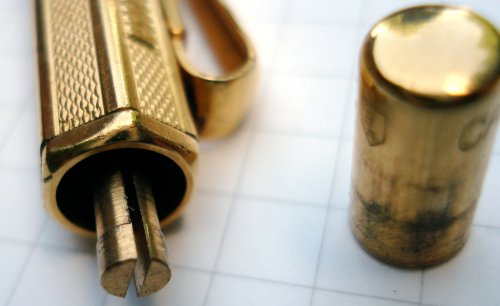
Lead advancement is like other clutch pencils.
To replace a lead (1.18mm), you eject the appropriate collet as far as it will go, and attempt to detach and replace the lead (and colour leads will be brittle) without breaking the lead or warping the collet. The collets have a very tight grip on the existing leads, so I can’t see how one would replace a lead without using external force – like a knife blade – to open up to collet. And – that force might very well distort the collet. But maybe I’m just thinking negatively.

Like the Faber-Castell multipencil, the Tricolor has many charms and is an attractive pencil. As well, it reminds one to appreciate modern conveniences.

